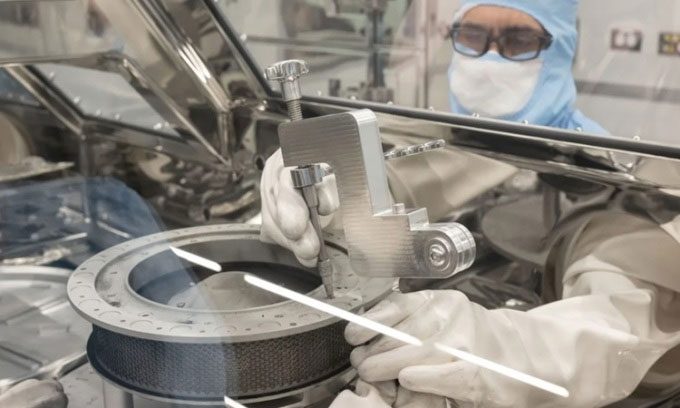Two Stuck Latches Prevent NASA from Recovering Valuable Samples from Asteroid After Months of Delay.
On January 11, NASA announced it successfully retrieved 70 grams of rock and dust from OSIRIS-REx, a mission that traveled nearly 6.4 million kilometers to collect samples from Asteroid Bennu, according to CNN. In October 2023, NASA personnel were unable to access some materials located in the sample storage compartment of the device known as the Touch-and-Go Sample Acquisition Mechanism (TAGSAM), a robotic arm with a storage compartment at its end designed to hold samples from Bennu. The compartment lid was secured by 35 latches, but two of them were particularly difficult to open.

NASA personnel attempting to open the sample compartment lid. (Photo: Robert Markowitz/NASA).
Opening this mechanism was no simple task. NASA had to use approved materials and tools around the compartment to minimize the risk of damage or contamination of the samples. “These new tools also had to operate in the confined space of a glovebox, which limited their height, weight, and bending motion,” explained Dr. Nicole Lunning, the OSIRIS-REx mission manager at NASA’s Johnson Space Center in Houston. “The team showed extreme patience and did an excellent job of removing the latches from the TAGSAM lid.”
To address the issue, NASA developed two stainless steel tools used in medical applications, the hardest metal approved for use. Before tackling the stuck latches, the team at Johnson Space Center tested the tools in a practice lab, gradually increasing force to ensure the tools could successfully detach the fasteners. By the afternoon of January 11, NASA indicated that a few more disassembly steps were needed. After that, they would be able to photograph, retrieve, and weigh the samples hidden within the compartment.
Analysis of materials from Bennu, collected by NASA researchers last fall, revealed that the asteroid samples contained abundant water in the form of hydrated clay minerals as well as carbon. The research team believes that the signs of water on the asteroid support the current hypothesis regarding how water appeared on Earth billions of years ago.
“The reason Earth became a habitable planet with oceans, rivers, lakes, and rain is that clay minerals fell to the planet about 4 to 4.5 billion years ago,” said Dante Lauretta, the principal investigator of the OSIRIS-REx mission.
Some Bennu samples collected earlier have been sealed in a containment box for study over the coming decades, according to NASA.


















































